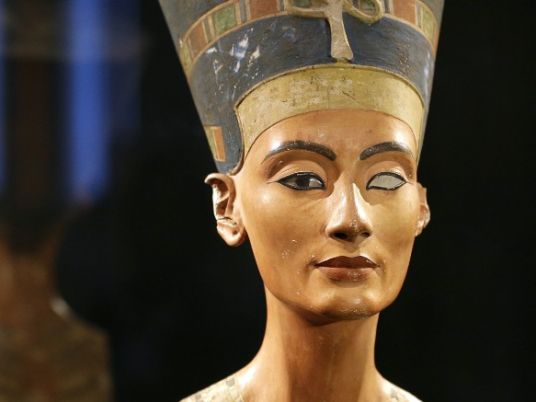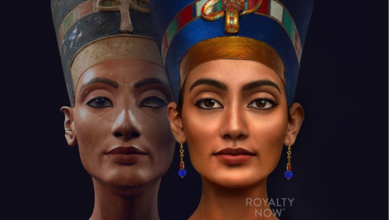
In an interview with Al-Masry al-Youm a few hours before the announcement of the radar examination results at Tutankhamun’s tomb in search for Nefertiti’s tomb, British Egyptologist Nicholas Reeves said he would not apologize if his theory was proven wrong.
“Archaeology is based on assumptions that could be right or wrong,” he said, adding that it would take a long time to complete his work. “But we do have indications.”
Q: When did you start to believe that there was another tomb inside Tutankhamun’s?
A: In February 2014, when the Spanish Factum Arte company scanned the walls of Tutankhamun's burial chamber to construct a mirror image of the tomb. Examining the high-resolution images, I found a vertical line on the northern wall left of the burial chamber and another line on the right. This indicates that the chamber is divided into two sections, one for the king and the other for someone else. I was the only one to delve into the matter.
Q: What would you do if you are proven right?
A: It would take me a long time and study to open the other chamber without harming the unique inscriptions on the wall. Other tombs elsewhere in the world were opened without damaging inscriptions.
Q: And what would you do if you are proven wrong?
A:I would not apologize because archaeology is based on assumptions that could be right or wrong. We could be five archaeologists each with a different point of view, but such professional differences would not denigrate any of us. Nefertiti was buried somewhere. If not here, then we will look for her elsewhere.
Q: Are you really that enchanted by Nefertiti?
A: Yes, but not obsessed.
Q: Zahi Hawass rejected your theory before it was even put to the test. What is your comment on that?
A: I respect the opinion of Zahi Hawass. As I said, we need not agree on everything.
Q: How do Egyptian archaeologists handle antiquities?
A: They do a great job.
Q: But one of them used the wrong glue to replace Tutankhamun’s broken beard on his gold mask. What do you think of that?
A: I think it was an accident. Accidents like this occur in all world museums. It is good that this is being fixed now.
But the strange thing is that nobody noticed that the ears of the mask are pierced. I think the mask is of Nefertiti and not Tutankhamun.
Q: The statue of Sekhemkhet was sold at an auction. What do you make of Egypt’s response to this?
A: I do not know the details. I am sad it would not be displayed in a museum again. But I think Egypt should have moved faster.
Q: Are you against selling the statue?
A: Absolutely. I am against any museum selling artifacts. They must display them for everyone to study and enjoy.
Q: Does Egypt have the right to claim it?
A: I do not know if Egypt has a legal right to do so. But from a humanitarian point of view, Egypt should have it back.
Q: Did you face any obstacles by Egyptian officials or international institutes during your work?
A: Not at all.
Q: Who helped you arrive at your theory?
A: Professor John Harris, who is now retired in Scotland. He taught me attention to detail, which is what I did when I examined those images.
Q: Does England provide support for Egyptologists that Egypt does not?
A: I do not think so. There are no sufficient funds. Some museums were closed in England for that reason. I think Egyptologists receive more support from Egypt.
Q: Antiquities Minister Mamdouh el-Damati said that 2016 will be the year the pyramids, and that preliminary tests indicate the presence of a vacuum behind the Cheops pyramid. Are you eager to participate in disclosing the secrets of the pyramids?
A: I specialize in the artifacts of the Valley of the Kings and Tel el-Amarna.
Q: What do you think of the exhibitions we hold abroad every year?
A: I think they are very important. They assert Egypt's presence in the international arena. Everybody is fascinated by them. Also, they make good revenues.
Edited translation from Al-Masry Al-Youm


